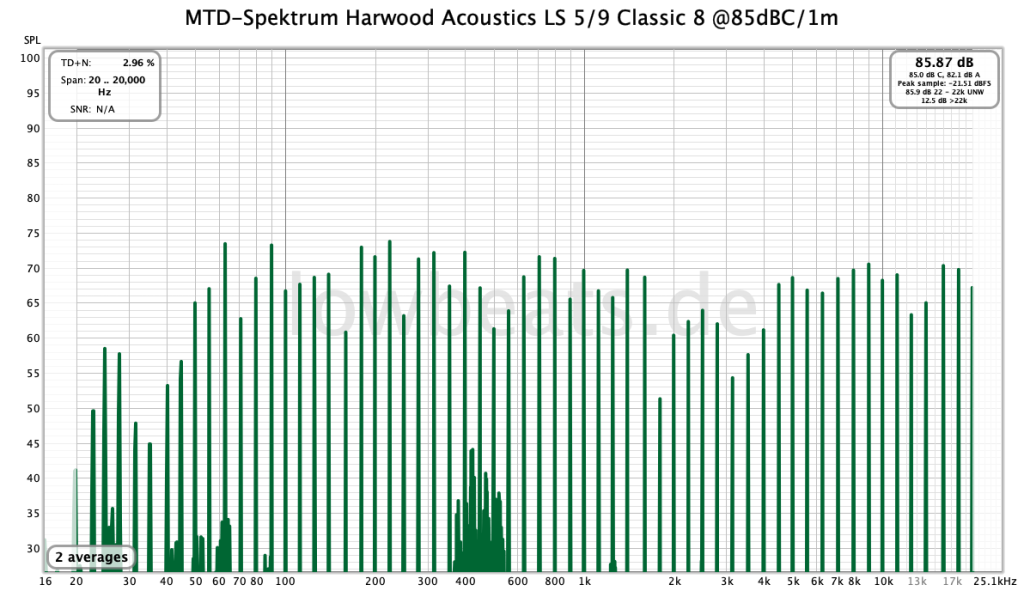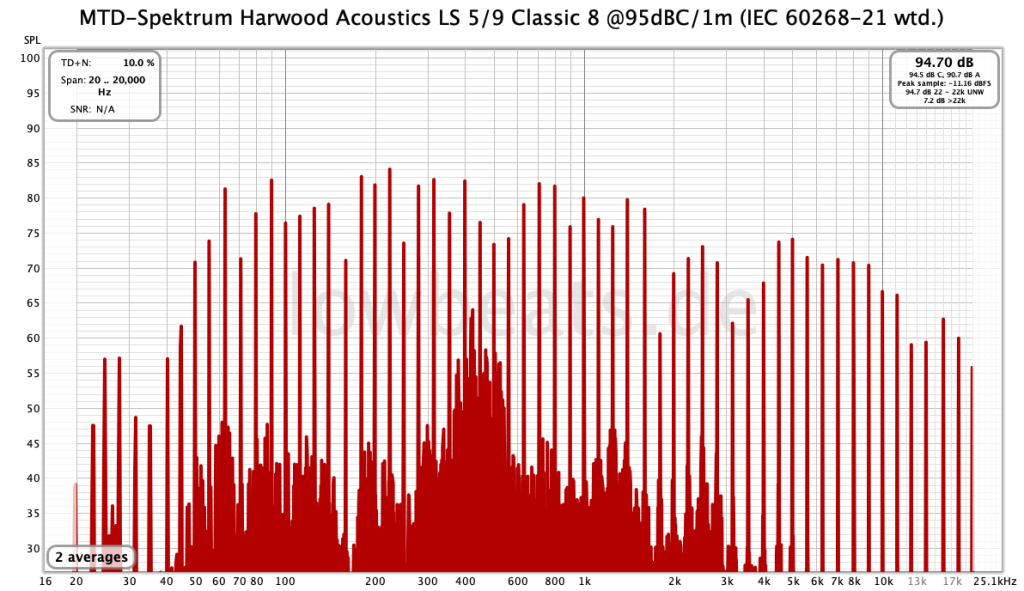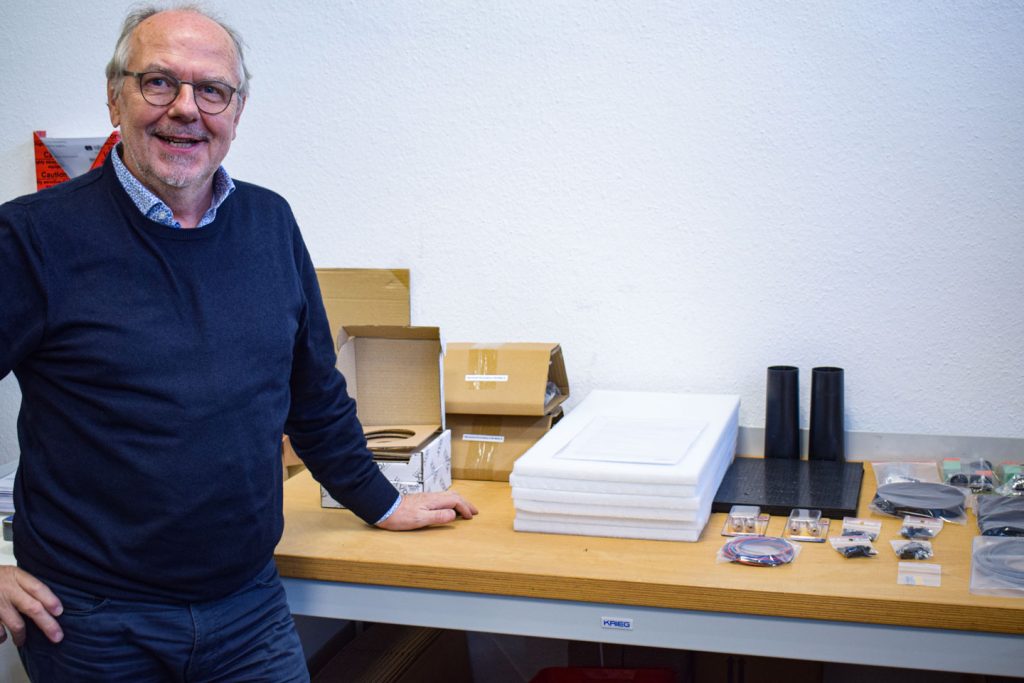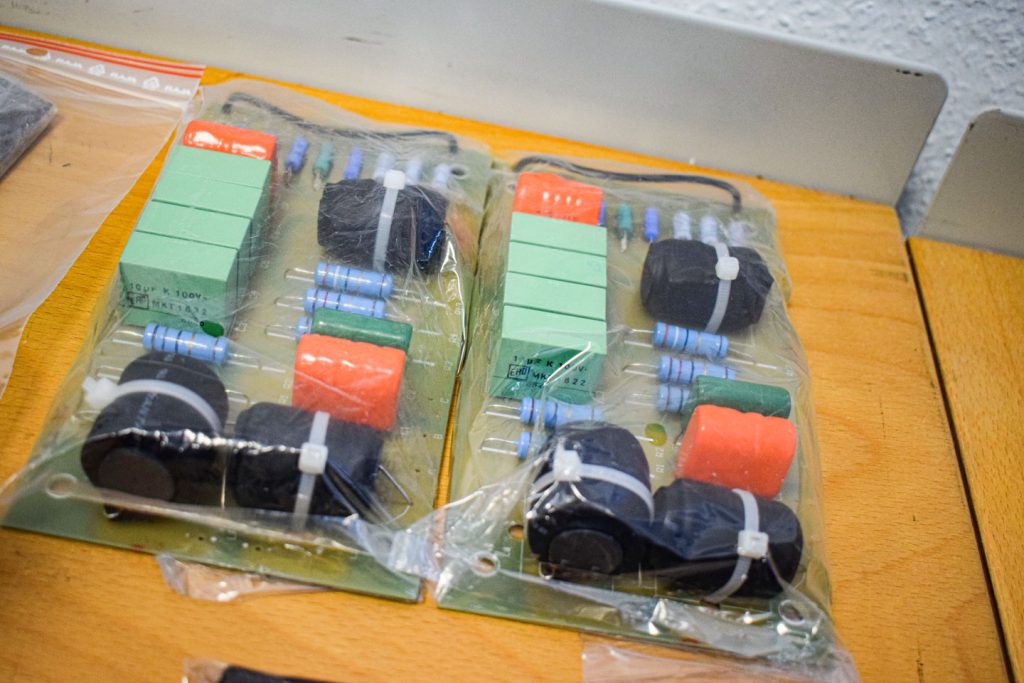To speak of a true wave is certainly an exaggeration. Nevertheless, it should be noted that there is a constant trend towards well-made retro loudspeakers. The new LS 3/5a models with all their derivatives and successors are certainly the best and best-known example of this. Now the larger LS 5/9 has also been reissued under various brands (e.g. Musical Fidelity and Harwood) – also once conceived by the BBC and used as a studio monitor. We recently tested the new Harwood LS 5/9, which of course also adheres to the strict BBC specifications, but comes up with some interesting variations – especially the fact that it is also available as a kit… Compared to the very compact LS 3/5a, which was already used as a monitor for the BBC’s OB vans in the early 1970s, the LS 5/9 is almost a youngster. It was not until 1983 that the keel was laid on the basis of the BBC research report RD 1983/10. And it should also have a completely different focus: It was far too big for mobile use. Instead, it should fill the role of a good studio monitor with significantly more level reserves. She did a wonderful job.
And some hi-fi fans are of the opinion that this design (which is after all 40 years old) is still an excellent alternative to current models.
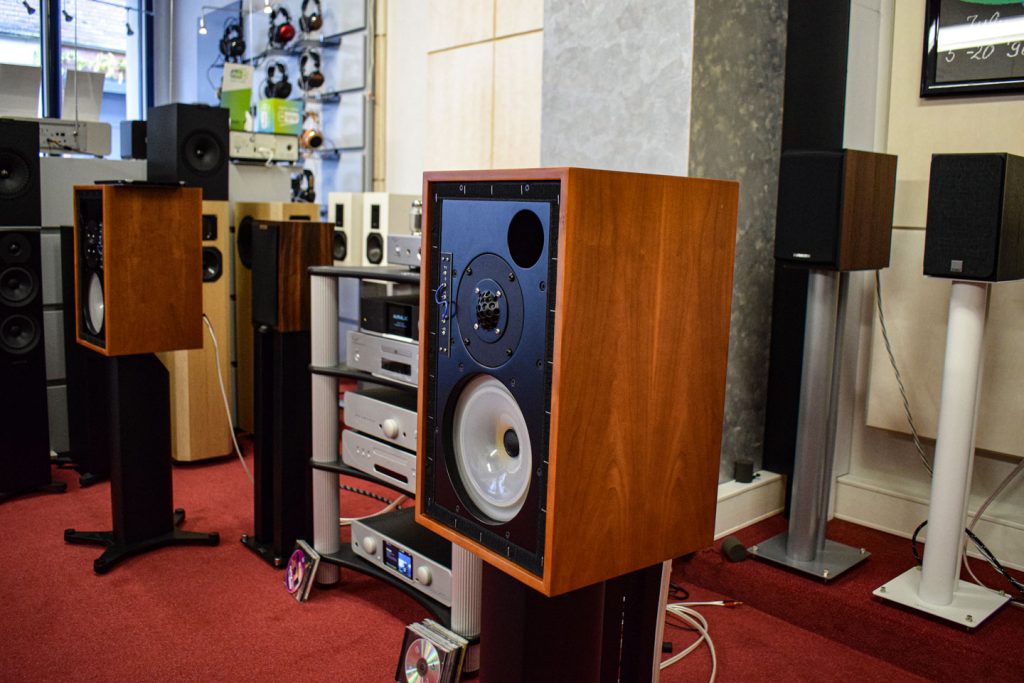
The story behind the Harwood LS 5/9
Raimund Saerbeck, head of Hifisound Münster, is unquestionably a true LS 3/5a specialist. After all, the Münster-based company offers this legendary BBC monitor as an original replica and even as a kit under its own loudspeaker label called Harwood. He has heard every variant and alternative variant. And of course he jumped at the chance when the manufacturer specializing in replicas who made him the LS 3/5a also offered him the LS 5/9. But Saerbeck, who runs one of the most established DIY loudspeaker stores in Germany and simply knows a lot about loudspeakers, was not happy with the result of the LS 5/9, which was built according to the original plans. Inexplicably low frequency response dips and incomprehensible high-frequency adjustments were incompatible with the high BBC requirements.

So he had an in-depth analysis carried out to substantiate his concerns. For example, the replicas of the original tweeter (formerly an Audax HD13D34H) were a full 2 decibels quieter than the original. This means that the original crossover may no longer be entirely suitable. So Saerbeck and his team began to make small modifications to achieve greater frequency response linearity and more playability. It was a convincing success – that much I can say in advance.
Let’s start with the structure of the 2-way design. As is usual with BBC developments, the housing is made of 12 mm thick (or thin) birch multiplex, supported by 15 mm thick struts in the corners. You couldn’t come up with something like that for the German engineer back then; he was into mass production. However, the BBC had established the advantages of these enclosures (low mass and fast oscillation) in a long series of measurements. And to make the enclosures resonate even faster (and so that the sound cannot diffuse so easily through the thin walls), bitumen panels are glued on the inside. In addition, insulation material is bound in bags (and thus remains permanently in shape).

The LS 5/9 was or is equipped with a 21 cm bass-midrange driver, which stood out due to its almost transparent and highly damping polypropylene cone. Another special feature is the rather hard vinyl surround and the comparatively small voice coil with a diameter of 25 mm. Voice coils of this size are not particularly resilient, but because they weigh so little (which is included in the total vibrating mass), the efficiency increases. The LowBeats measurement lab measured 88 dB – which is almost utopian for speakers of this age and origin.

At the time, the combination was supplemented with the Audax HD13D34H, an unusually large 34 mm dome tweeter that could be pulled down to just under 1,000 hertz with a few tricks.
But that was obviously not what the BBC developers had in mind. They set the crossover frequency to 3,000 Hertz and thus ensured a carefree life for the tweeter. This is also confirmed by the LowBeats measurementsbelow: the entire high-frequency range is free of distortion – even at maximum level.
The analysis that Saerbeck commissioned identified minor weaknesses in the tweeter in particular. Although the Chinese manufacturer has delivered a spotlessly clean copy of the legendary Audax HD12D34H, the replica lacks a good 2 decibels in the operating range. This in itself called the original BBC poll into question. No problem, you might say: Why do I have the complex and unusual (because you have to solder it yourself) tweeter adjustment on the front?
On closer inspection, however, the matching network turned out to be not entirely flawless: if the tweeter level was changed, the crossover frequency to the tweeter also changed audibly.
Saerbeck & Co. got all this on track: in its current approved version, the Harwood LS 5/9 sounds like an original Rogers model from the late 1980s. I was able to listen to both versions at Hifisound Münster and both sound wonderfully natural and quite lively – with a slight advantage for the new Harwood.

Practice
I have already mentioned the pleasingly high efficiency: 88 dB is a good value even for the most modern designs. But the measurements also revealed other highlights of the replica: for example, the pleasingly high maximum level of 95 dB (continuous) and up to 105 decibels with music. This should more than fulfill the BBC’s requirements.
Another real plus is the pleasingly linear progression of impedance, phase and EPDR. Any amplifier can cope with this.

Considering the high efficiency and the almost perfect impedance/phase relationship, it can be assumed that almost any amplifier will do. This also applies to smaller tube amps, which would not be my first choice because the LS 5/9 are not among the liveliest loudspeakers under the sun… Instead, with small but fine transistor amplifiers – such as an Atoll IN50 Signature (850 euros) or an Exposure 2510 (1,750 euros) – you get a delightful, highly balanced combination.
From my point of view, the sober and precisely tuned bass range is also pleasing, especially due to its high precision. This enables the listener to push the LS 5/9 close to the rear wall without having to worry about excessive booming bass.
Hearing test
The character of the LS 3/9 is unmistakably that of a BBC monitor from the 1980s. This almost necessarily involves a restraint in the mids (in this case between 1.5 – 4 KHz), which is also reflected in the sound. This discreet approach makes voices and very present recorded strings still easy to hear. Just as a high level of tonal harmony is one of the greatest advantages of this loudspeaker – you simply enjoy listening to music with it.
This trait also includes a never exaggerated high frequency range and a not particularly pronounced liveliness – therefore the connected amplifier should maintain a rather fresh tone. However, the LS 5/9 should not be lumped together with the LS 3/5a. Although it is also very melodious, it has virtually no dynamics at all. Compared to this, the LS 5/9 plays lively…

In terms of agility, the LS 5/9 is roughly on a par with our compact speaker reference – the Dynaudio Heritage Special, which is twice as expensive. However, the Dynaudio also showed what can characterize modern designs: The Danish speaker produced much more and deeper bass from a considerably smaller cabinet. In addition, the Dynaudio presented details in the mids and highs with even more grip, finesse and airiness.
Nevertheless, the LS 5/9 offers a very independent, highly cultivated form of reproduction that can indeed be a charming alternative to equally expensive, modern designs (such as a B&W 705 S3).
Rating
The kit
The LS 5/9 was with us for a long time and over time it really grew on me. It’s a speaker that you really enjoy listening to music with if the level remains within the normal range. So 3,000 euros for the pair is no bargain, but anyone who likes this form of British hi-fi will be well served by the LS 5/9.
But Hifisound Münster still has this kit offer for 2,000 euros per pair. And anyone with a taste for tangible hi-fi technology and no two left hands should definitely take note. During my visit to the main Hifisound store in Münster, I took a close look at the kit. Everything has been thought of:
Unfortunately, the housing cannot be ordered from Hifisound. But Saerbeck has found an excellent joinery in variant GmbH, which even offers different LS5/9 empty cabinets for a maximum of 380 euros (ready-glued cabinet). Here is the full address again:
variant GmbH
Molkereistr. 3
35039 Marburg
Germany
Phone: +49 6421-483909
Mail: [email protected]
However, all those who consider themselves to be particularly adept can also do it themselves according to the original plans. You might get even better quality and an even better feel.
And the kit not only has the advantage of being significantly cheaper: Saerbeck provides the homebuilder with the original tweeter, the HD13D34H from Audax, which – as we have learned – has 2 dB more efficiency.
I had the opportunity to compare the finished box with the kit in the Variant joinery case over several days. The difference was negligible. If anything, I would have seen slight advantages in the kit…
Conclusion Harwood LS 5/9
With the LS 5/9, another loudspeaker from the great BBC era enriches our scene. The replica is really well made – right down to the stapled crepe strips on the front or the unconventional tweeter adjustment next to the tweeter. British loudspeakers of the time had a high quirkiness factor – and this is fully realized here. Class.
But I like the kit even better (and the price/sound ratio is significantly better). You don’t have to do much to save a few hundred euros, but the feeling of building it yourself is generally a good one. In addition, all kits are tested and calibrated. So there are no nasty surprises, and in terms of sound, the kit for around €2,000 is a truly exceptional and good-sounding piece of hi-fi history – which is still great to listen to today (and for a long time).
Rating
SoundUsabilityQualitySummary |
| The rating always refers to the respective price category. |
| | Subtle, musically natural tuning |
| | Electrically undemanding, suitable for any amplifier |
| | Pleasingly inexpensive as a kit |
| | Quirky front design, idiosyncratic tweeter adjustment |
Distribution:
hifisound loudspeaker distribution
Drensteinfurtweg 32/34
48163 Münster
www.hifisound.de
Price (manufacturer’s recommendation):
Harwood LS 5/9: 3,000 euros
Technical data
| Harwood LS 5/9 | |
|---|---|
| Concept: | passive 2-way compact speaker, bass reflex |
| Fitting: | TMT: 1 x 21 cm, HT: 1 x 34 mm |
| Transition frequency: | 3,000 Hz |
| Nominal impedance: | 6.7 Ohm |
| efficiency (2.83 V/m): | 88 dB |
| Maximum level (permanent/short-term): | 95 / 105 dB |
| Minimum power for maximum level (duration) | >10 watts |
| Housing: | 12 mm birch plywood with cherry veneer |
| Dimensions (H x W x D): | 46.2 x 28.1 x 27.6 cm |
| Weight: | 12.2 kilogram |
| All technical data | |
Teammates and opponents:
Test compact speaker Harwood LS 3/5a: the BBC classic for under 1,000 euros
Test Dynaudio Heritage Special: in the tradition of the great special models
Test integrated amplifier Atoll IN 50 Signature: full sound splendor for 750 euros






